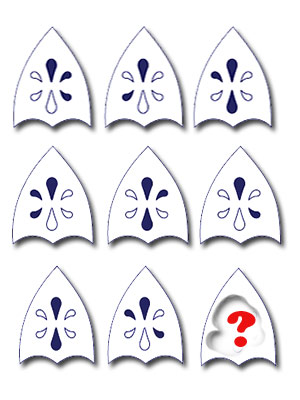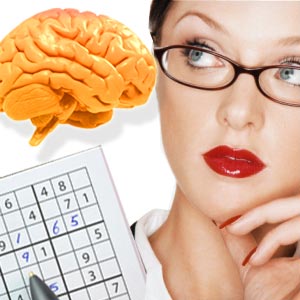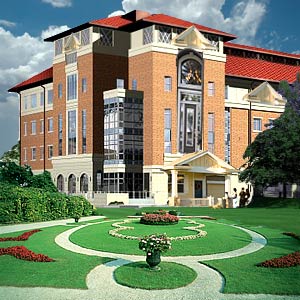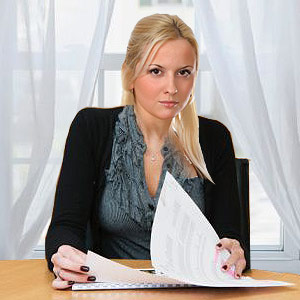Spatial Reasoning Tests
Spatial reasoning tests are widely being used in the selection processes which require an ability to use practical and visual skills in jobs such as engineering and driving roles. It is increasingly also used now in fields such as medical and scientific roles, as in mechanical engineering, flying airplanes, architecture etc. It is because of the many real-world situations they could be used in, spatial ability tests are widely used in these fields.
Also called 'ability' sometimes, here the candidates' ability to visualize and then manipulate different complex shapes and patterns is tested. It is felt by some that spatial competence is mostly inherited. However spatial awareness tests have proven that this ability can be greatly improved with targeted practice. Spatial reasoning tests may cover different areas such as matching shapes, rotating shapes and symbols and the use of 3D cubes and dimensions.
Spatial ability tests are especially difficult for some who fare well in other reasoning skills tests, especially when they have to mentally rotate, construe or assemble three-dimensional objects. Also known as Spatial Awareness Tests, these tests examine orientation skills in two and three dimensional spaces. Popular spatial reasoning includes organizing two dimensional shapes, spatial reasoning cubes, mirror images and perspectives.
Sometimes, the questions present shape sequences that are ordered by predetermined logic. The applicant is asked to choose the shape in the sequence or draw conclusions about the shape's expected configuration and conformation after it has gone through a spatial change.
Who takes the spatial reasoning tests ?
These tests are usually found in aptitude selection processes of industries that look for spatial skills in their candidates. These could be technical positions, engineering, military units and air force, design architecture and more. The selection process for many jobs in illustrations, publishing and technology include spatial reasoning tests. They include shape matching, shape rotation, combining shapes, cube views and manipulation of solid shapes.
Types of spatial reasoning tests
Spatial reasoning combing shapes test involve questions that show 2-dimensional shapes and one of the shapes 'cut up' into pieces. The questions present the applicant with the pieces and he/she is asked to work out which of the shapes has been 'cut up'. The applicant is asked to match the pieces to the shape that they came from.
Cubes in 3-dimension is another spatial reasoning test with unique figures, markings or symbols on each face. The applicant is then asked to identify which symbol is on the opposite face. Usually several three dimensional cubes are given and questions about it. Some have a natural flair for imagining objects in three dimensions and find these questions straightforward. For others, it is difficult and there are other ways to get the answer. This test calls for looking at 3D image in a specific way and then matching them up. The images have to seen from different angles.
Matching 2-dimensional shapes is another spatial reasoning test where the applicant is under the pressure of time. There are questions with a number of objects out of which only two are identical. The applicant needs to identify the matching shapes, some of which may have been rotated.
Thus some spatial ability questions test either speed or power or both. If questions involve the manipulation of 2 dimensional objects, then they are could be straightforward but these will challenge the applicant to answer them in given time. Sometimes two groups of about 25 simple, flat objects are given and pairs that are exactly of the same size and shape are asked.
Matching rotated shapes and images is another type of test and here the applicant is presented with a number of rotated groups of shapes and images. Two are identical and that task is to decide which ones match from the options offered. This is slightly more complex than 2-dimensional shape matching questions as the applicant needs to identify identical groups in which some will be rotated. Five or six such elements are presented and he/she needs to be careful that they don't identify reflections. The best strategy is to choose the most asymmetrical shape in the group and then determine the shapes 'clockwise' and 'anticlockwise' and opposite. Thinking thus will render it more logically right, left, above and below.
Sometimes, solids in 2 and 3 dimensions with many irregular shapes are used. Here, each face of the solid shape will have a shape of its own rather than just being square. The questions are similar to the cube questions but they use solid shapes.
As previously mentioned maps and plans with spatial reasoning questions appear in tests for emergency services which require following directions or solving problems with an appropriate solution in a day-to-day working situation on the job. While sometimes all four directions are given, at times just North is given and the applicant has to work out the others. One needs to pay attention to traffic regulations also and not just to points of the compass to tackle this test.
Spatial reasoning questions often form part of a general aptitude test or they may also be presented as a separate test. These tests should not be confused with abstract reasoning tests.
Tips for passing spatial reasoning tests
Practice plenty of psychometric tests as this can improve brain power when it comes to taking tests. Although it is essential to practice different types of questions, this will help improve your spatial ability and awareness and increase confidence at the assessment center. Think logically - especially when trying out sample tests and remember the tests are usually multiple choices in nature and quickly rule out 2 or 3 answer options.
Do not panic. Spatial and psychometric tests in general are designed such that the applicant does not finish them. When candidates turn over their test paper, they immediately panic when they see the number of questions there are. What is perhaps important is the ability to answer as many questions as possible whilst still aiming for accuracy. Marks for incorrect answer or wild guesswork are usually deducted.
Top of the Page: Spatial Reasoning Tests

 Career Development
Career DevelopmentWoman in the Workforce - Work ethic, work spirit and latest happenings on the work scene ...
Career Choices for Women - Career options, interview guides and tips ...
Women Entrepreneur Qualities - Be your own boss...
Achieving Work Life Balance - Delicate balance ...
Pre Hire Assessment - Measuring suitability ...
Ability and Aptitude Tests - Fit for the job ...
Internship Application Tips - Further your prospects ...
Free Career Aptitude Test - Unique insight into your talents ...
Resume Builder - Resume tips to climb the career ladder ...
Employee Satisfaction Survey - Read the pulse of an organization ...
Gini Coefficient - Gender Income Equality ...
Career Planning
 Managing Work Stress - Juggling time and responsibilities ...
Managing Work Stress - Juggling time and responsibilities ...Midlife Career Change - Crossroads of life ...
Career Assessment - Assess your skills to choose the right career ...
Career Counseling - How can a career counselor help you? ...
IQ Score - Tests of intelligence and ability ...
Career Aptitude Test - Provide unique insight into your talents and skills ...
Free Psychometric Tests - Make right hiring decisions ...
Spatial Reasoning Tests - Visualize complex shapes ...
Performance Appraisal - Assessment for future performance or potential ...
Telecommuting - Your virtual office ...
Career Opportunity
 Biomedical Engineering Jobs - Integrate medicine and engineering ...
Biomedical Engineering Jobs - Integrate medicine and engineering ...Actuary Jobs - Evaluating future risk ...
Market Research Analyst - Researching Market Potential ...
Family Counselor - Lend a patient ear ...
Career in Botany - Explore plant kingdom ...
Pet Sitting Service - Love for animals ...
Screenplay Writing - Weaving movie magic ...
Foreign Language Interpreter - Say it right ...
Psychology Degree Career - Understanding people ...
School Psychologist Career - Collaborate with educators and parents ...
Museum Curator - Appreciation of history, environment, arts ...
Graphic Arts Career - Visualize, arrange and attract ...
Animal Care Career - Far from the routine ...
Secretarial career - Office professional ...
Investment Banker - Ample growth prospects ...
Registered Dietitian - Address nutritional needs ...
Landscape Architect - Create aesthetic surroundings ...
Retailing Management - Work with merchandizing systems ...
Gemology Career - Eye for detail ...
Summer Jobs for 13 year olds - Learn and earn ...
Human Resources Jobs - Core business driver...
Summer Teaching Jobs - Passion for teaching ...
Summer Internship Program - Valuable work experience ...
Home Caregiver - Assisted living ...
Airline Careers - Take a peek into high flying careers ...
Fitness Career - Fitness is big business ...
Chiropractor - Treatment by hand ...
Interior Design Career Guide - - What makes a successful interior decorator? ...
Nursing Career Guide - Aspects of the nursing vocation ...
Real Estate Career Opportunity - Careers in land and property management ...
Newborn Photography - Capture the innocence ...
Massage Therapist Jobs - Knead stressed muscles ...
Recreational Therapist - Promote wellness through recreational activity ...
Hypnotherapist Job - Work on the subconscious ...
Ecommerce Consultant - Benefit from an online presence ...
Franchise Consultant - Dream of your own business but don't know where to start ...
Online Career Guide
 Freelance Writing Opportunity - Provide life to words ...
Freelance Writing Opportunity - Provide life to words ...Online Tutoring Services - Learn from home ...
Effective Web Content Writing - Writing content for impact ...
Proofreading Services - Checking content for errors ...
Telemarketing Services - Talk your way through ...
Transcription Services - Highly accurate and productive ...
Hospitality Career
Culinary Art School - Whip up a great career ...
Cruise Ship Jobs - Keeping up with increasing needs ...
Event Management Jobs - Coordinating many agencies ...
Bartending Job - Non-traditional career ...
Hospitality Career - Serving people and enjoying it ...
Restaurant Management - Another management career ...
Beauty Career
 Professional Makeup Artist - Transform your look ...
Professional Makeup Artist - Transform your look ...Wedding Coordinator - An integral part of important function ...
Hair Stylist - Get your clients to look and feel beautiful ...
Beauty Makeover Consultant - Providing a makeover ...
Fashion Design Career - Flair for style ...
Modeling Career - Find out what it takes to be a model ...
Legal Career
 Loan Officer Training - Assist and guide loan applicants ...
Loan Officer Training - Assist and guide loan applicants ...Fraud investment Lawyer - Securities litigation attorney ...
Law Enforcement Career - Competitive and interesting options ...
Top of the Page: Spatial Reasoning Tests

